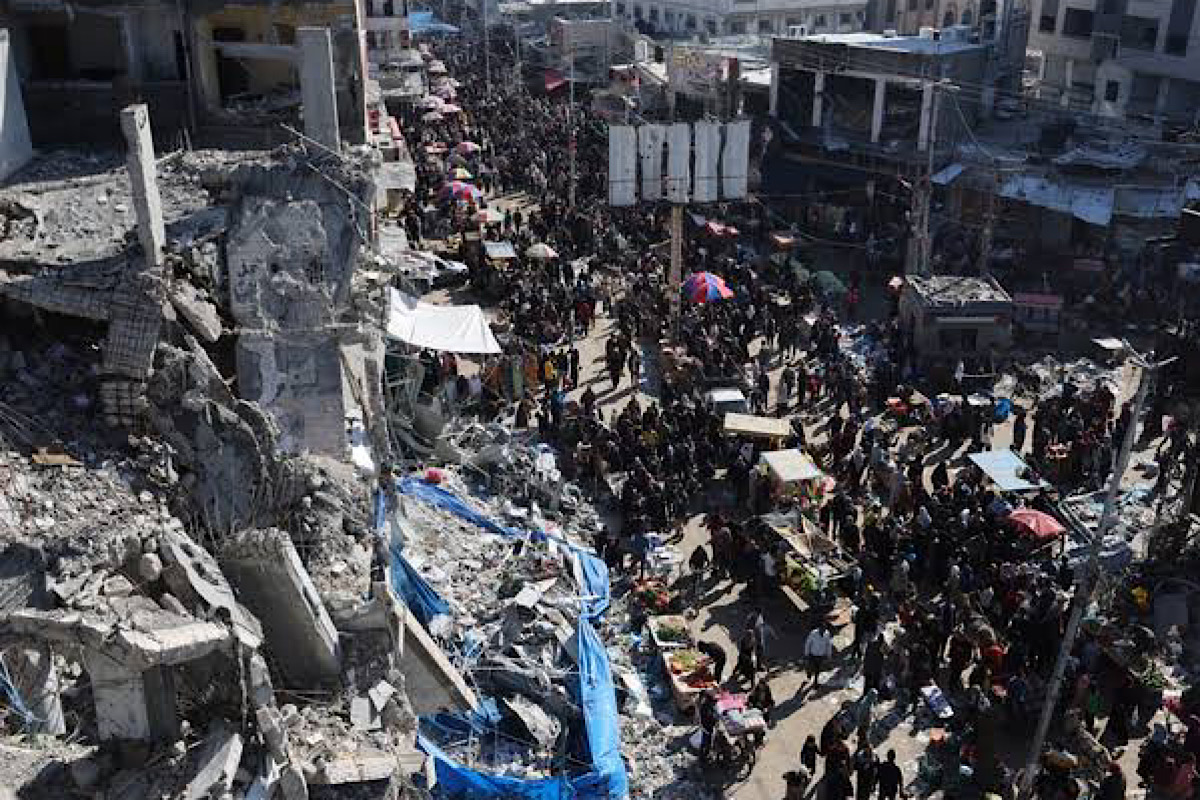I srael stands like a steady rock in the midst of choppy seas. Post its retaliation of the 7 October 2023 attacks, it has almost completely destroyed Gaza and ‘claims’ to have annihilated Hamas as also its ability to wage war. It was also behind the assassination of Ismail Haniyeh, the political leader of Hamas in Tehran in July this year. However, recent rocket attacks from Gaza display that Hamas still possesses the capability to strike, though not at the same level as before. This has led to Israel reengaging Hamas militarily. A number of Israeli hostages remain with Hamas.
Talks of peace and return of hostages are no longer on the cards. The Hezbollah in Lebanon supported Hamas by targeting Israel with over 8,000 rockets during the past year. Hezbollah is believed to possess around 150,000 rockets. Israel was compelled to relocate almost 100,000 settlers from its northern region bordering Lebanon. Once it contained Hamas, Israel commenced targeted operations against the Hezbollah as per a systematic plan.
Advertisement
It initially exploded pagers killing or maiming the group’s middle level leaders as also impacting their communications. Next it hit its top hierarchy, including its secretary general, Hassan Nasrallah, as also most of its Radwan (special forces) Unit leadership, adding to turmoil within the Hezbollah. Simultaneously, the Israeli Air Force launched concerted aerial assaults targeting Hezbollah’s stockpiles of rockets and their launchers. It has been a couple of weeks and Hezbollah is yet to announce Nasrallah’s replacement, conveying hesitation amongst its hierarchy to take up the responsibility.
Despite Israel’s aerial assaults and targeted killings, Hezbollah’s rocket attacks continue. Israel’s main concern is that Hezbollah’s rocket assaults alongside those of its other allies, including the Houthis, can overwhelm Israel’s Iron Dome antimissile systems. The Houthis in Yemen have been hitting Israel with long range rockets, while attacking ships in the Red Sea. As per a report last week, the Houthis have thus far targeted over 80 merchant vessels, employing a combination of missiles and drones, sinking two and capturing one. They have stated their intent of only attacking ships connected to Israel, US and UK.
In retaliation, apart from Israel, the US and UK have also launched aerial assaults on Houthi positions in Yemen, hoping to deter them. Last month the Houthis claimed to have downed two US MQ-9 Predator drones. Iran-led ‘axis of resistance’ groups also exist in Syria and Iraq. They have the resources to target US troops deployed in the region. Members of these groups can cross over into Lebanon to engage Israel alongside the Hezbollah. Israel targeted Maher al-Assad, brother of Syrian President, Bashar al-Assad. The intent was to send a message of Irael’s ability to strike Damascus in case Syria opened a new front. The message seems to have been received.
The Syrian military is silent. Iran believes that both Hamas and Hezbollah remain capable of countering Israel. Tehran’s foreign ministry spokesperson, Nasser Kanaani, told reporters, “There is no need to send volunteer or support forces from Iran to Gaza or Lebanon (Hezbollah), as both have the necessary capability to defend themselves.” Meanwhile the US has warned Israel against destroying Lebanon, especially Beirut, on similar lines as Gaza. They fear the response of the world may not be as silent as it was with Gaza. Israel recently amended its war aims to include moving back its relocated citizens to their original settlements close to the Lebanon border.
This implies creating a buffer zone within Southern Lebanon, possible only by launching a ground offensive to push Hezbollah beyond the Litani River. Its operations have resulted in casualties to UN forces, drawing global condemnation. The last time Israel entered Lebanon was two decades ago and the war lasted 34 days, with little gains. How long will the current engagement last and whether Israel would succeed is to be seen. In the first week of the assault, reports mention losses on both sides, with little gains. In the midst of this, in early October, Iran launched 200 missiles on Israel, in retaliation to the assassination of Hezbollah leader, Hassan Nasrallah alongside Iran’s Brigadier General Abbas Nilforoushan. Israel has yet to retaliate militarily. Iran has warned of expanding the conflict in case Israel counterattacks.
Other Arab states have adopted a wait-and-watch approach. Iran’s proxies have targeted them too periodically and their destruction would be beneficial for West Asia. They have also accepted the right of Israel to exist. Many have banned anti-Israel/ pro-Palestine protests on their soil. In the midst of this, Iran’s foreign minister, Abbas Araghchi, visited Riyadh and Qatar. He met Saudi Crown Prince Mohammed bin Salman. Amongst the topics discussed include securing a ceasefire in Gaza and Lebanon. For Iran, survival of Hezbollah is crucial in its long-term plans of being a major player in the region. Simultaneously, Tehran warned Arab states against permitting use of their airspace for Israeli strikes, announcing it could invite retaliation.
Currently, most Arab states have refused permission for Israel to use their airspace to target Iran. This will restrict Israel’s options. There is no doubt that Israel will respond to Iranian strikes. It has already targeted Iran by large-scale cyberattacks. Israel is aware that proIran groups in its vicinity provide depth to Iran and must be rendered ineffective prior to engaging Tehran. In case it does not do so, Iran could open multiple fronts.
Iran struck Israel’s military targets with no casualties. Advance warning was also provided through Russia. It expects Israel to follow a similar pattern. The question that Israel faces is how many fronts is it capable of simultaneously handling. Should it destroy Hezbollah and Houthis prior to targeting Iran, or else a combined missile retaliation could impact the efficacy of its Iron Dome as also US and UK ship-based interceptors.
To add to Israel’s security the US has deployed THAD missiles in the country, manned by American troops. Israel also does not possess strategic depth to absorb strikes from multiple directions. The more fronts Israel opens, the lesser are its chances of success. The US is unlikely to join any Israeli-led offensive action, especially with elections looming large. Israel’s decision to move forward cannot be political but based on the capacity of its armed forces.
(The writer is a retired Major-General of the Indian Army.)











